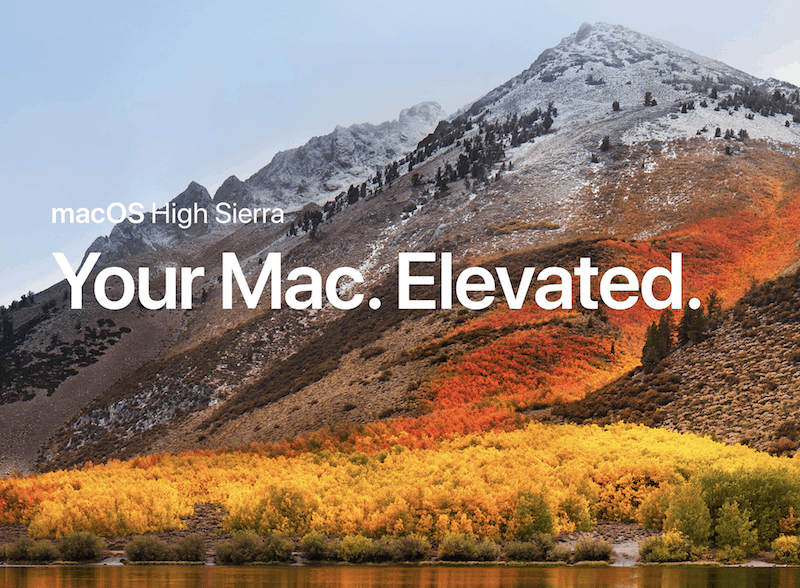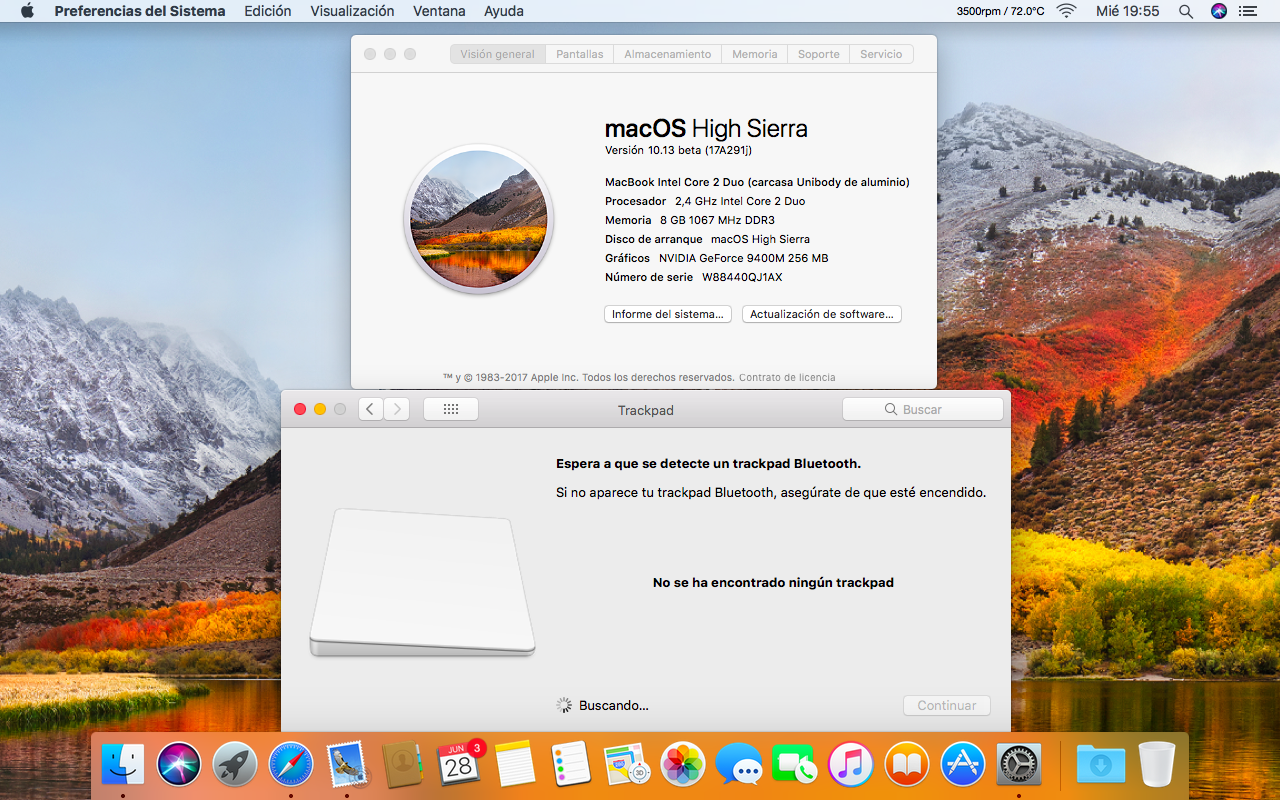- Dosdude1 Macos High Sierra Patcher Download
- Dosdude1 High Sierra
- Dosdude1 Macos High Sierra Patcher
- Macos Catalina Patcher Dosdude1
- Dosdude1 Big Sur Patcher
- Dosdude1 Macos High Sierra Patcher Tool For Unsupported Macs
I specialize in component-level board repair on Apple Macintosh computers, and programming for both macOS and iOS platforms. On this site, you'll find links to software I've written, as well as miscellaneous files, operating systems, and media that I've collected over the years. Download macOS High Sierra Using Dosdude Patcher. As stated earlier, Apple does not offer the full version of High Sierra and it provides only 19MB update file and it is beneficial for you when you have High Sierra. So, to get the same, you will have to go with Mac OS High Sierra Patcher. Open the 'macOS Sierra Patcher' tool, and browse for your copy of the macOS Sierra Installer App.Ensure that the tool successfully verifies the app. Next, select your USB drive in the Target Volume list, and click 'Start Operation.' When the operation completes, boot your target unsupported Mac off the USB drive you just created. While it works and is fully usable, Sierra detects it as just a standard mouse, preventing you from changing some trackpad-oriented settings. Insert your desired USB drive, open Disk Utility, and format it as Mac OS Extended (Journaled). Open the 'macOS Sierra Patcher' tool, and browse for your copy of the macOS Sierra. Whether its Dosdude1’s Catalina Patcher, Julian’s macOS Patcher, or Isiah’s macOS Extractor, you have a wide range of solutions that can work with your specific Mac Model. Compatible We strive to push your Mac Model to its limit without compromising its usefulness.
Recently my sister asked me to reinstall the macOS High Sierra on her iMac because it stopped working correctly. I thought that it would be easy to do but I was mistaken. I successfully installed the macOS Mountain Lion (when using the NetBoot it automatically selects the version of macOS with which the iMac was shipped with). But then I was facing multiple issues trying to update macOS from Mountain Lion to High Sierra via the Mac App Store.
After downloading a copy of macOS High Sierra from the Mac App Store, I started installing the update. The Mac rebooted, and it seemed that everything was going well, but it was not. The progress bar did not move at all, or moved very slowly. I waited a few hours…
I began to figure out what was going on and found out the following. Attempting to download macOS High Sierra from the Mac App Store I found that a small 19 MB version of the “Install macOS High Sierra.app” file downloads to the “Applications” folder, rather than the complete 5.2 GB installer file. That’s the problem.
The tiny 19 MB incomplete installer requires an internet connection during usage to download the rest of the High Sierra update files. Additionally, it does not allow me to create a macOS High Sierra USB installer drive for use on multiple computers.
I’ve found a new workaround, and in this tutorial, I’ll show you how to download the complete “Install macOS High Sierra.app” file from Apple server using the “macOS High Sierra Patcher” app instead of via the Mac App Store.
About the app
In this workaround, we’re going to use the macOS High Sierra Patcher app from the dosdude1.com. This app is intended for those with unsupported Macs and Hackintosh users, but any Mac user can use the app to be able to download the complete macOS Mojave installer file from Apple server. For our purposes in this particular walkthrough, we will use the app only to download the complete installer file.


Dosdude1 Macos High Sierra Patcher Download
Note! This method relies on a third party app from an unverified third party source. If you are not comfortable with using unvetted and unverified software, do not follow this process.
Let’s begin
Dosdude1 High Sierra
Downloading the complete “Install macOS High Sierra.app” file from Apple server using the “macOS High Sierra Patcher” app is a really easy process. Now, step by step guide.
Go to the official website of the “macOS High Sierra Patcher” app here and download the app.
Launch the “macOS High Sierra Patcher” app.
Note! By default, macOS preventing apps from unidentified developers or sources from being launched. So you most likely will get an alert message that says: “macOS High Sierra Patcher.app can’t be opened because it is from an unidentified developer”. To allow just one specific app to run do the following:
- Hold down the
Controlkey and click the app icon. From the contextual menu chooseOpen. - A popup will appear asking you to confirm this action. Click the
Openbutton.
Ignore everything about patching, instead pull down the “Tools” menu and choose “Download macOS High Sierra…”.
Confirm that you want to download the “Install macOS High Sierra.app” file, and then point it to a location to save on the hard drive.
Close the “macOS High Sierra Patcher” app when the download is complete and locate the “Install macOS High Sierra.app” file you downloaded.
Conclusion
That’s it, you’re done. Now you have the complete “Install macOS High Sierra.app” file downloaded. So simple isn’t it?
You can confirm that you have the complete “Install macOS High Sierra.app” file by getting info on the file. For this simply select the file and click the Spacebar key (or right-click on the file and choose “Get Info”). The complete installer should be around 5.2 GB rather than the tiny 19 MB incomplete installer that requires additional downloads.
Note! Remember, the “Install macOS High Sierra.app” file deletes itself automatically after macOS High Sierra has successfully installed. Therefore, you may want to make a backup by having previously copied it to external storage.
Let me know in the comments section if you know another way to download the complete “Install macOS High Sierra.app” file rather than the tiny incomplete installer.
I hope this article has helped you learn how to downloaded the complete “Install macOS High Sierra.app” file from Apple server. If this article has helped you then please leave a comment
Thanks for reading!
Arthur is a designer and full stack software engineer. He is the founder of Space X-Chimp and the blog My Cyber Universe. His personal website can be found at arthurgareginyan.com.
While the yearly major macOS update system is free to install, it is still limited to Macs that Apple deems compatible, and every year a generation of Macs essentially becomes obsolete. This is despite the fact that Apple is eager to emphasize that macOS is a widely compatible operating system.

As it happens, there are still people with close to ten-year-old Apple desktop computers still in use on a daily basis, likely performing a range of lighter tasks.
Download CleanMyMac X from MacPaw’s website and clean up to 500MB of junk data from your computer while enjoying all the features of the software without major limitations.
Which Macs Don't Support High Sierra
For some reason Apple doesn't want to allow these Macs to run one of its latest operating systems, namely macOS 10.13 High Sierra. This leaves the following Macs on macOS 10.11 El Capitan:
- MacBook Pro – late-2009 or earlier models
- MacBook – late-2008 or earlier models
- MacBook Air – 2009 or earlier models
- iMac – late-2008 or earlier models
- Mac Mini – 2009 or earlier models
- Mac Pro – 2009 or earlier models.
These machines are considered obsolete and vintage by Apple. The company defines vintage products as those that have not been manufactured for more than five years but less than seven years ago. Obsolete products are those discontinued more than seven years ago.
How To Install macOS High Sierra on Unsupported Macs
Though Apple doesn't support the above hardware officially, someone has thought about sharing the love for these older machines. A developer known as DOSDude1 has written a patch that works on Macs with the Penryn architecture. Using this still imposes certain limitations, but at least makes it possible to install macOS High Sierra on the following Macs:
- Early-2008 or newer Mac Pro, iMac, or MacBook Pro (MacPro 3,1 and 4,1, iMac 8,1 and 9,1, MacBook Pro 4,1, 5,1, 5,2, 5,3, 5,4, and 5,5).
- Late-2008 or newer MacBook Air or Aluminum Unibody MacBook (MacBook Air 2,1, MacBook 5,1).
- Early-2009 or newer Mac Mini or white MacBook (Mac Mini 3,1, MacBook 5,2)
- Early-2008 or newer Xserve (Xserve 2,1, Xserve 3,1).
If you happen to own any of the Penryn Macs mentioned above, the macOS High Sierra Patch Tool written by DOSDude1 will make running the latest software possible. But remember, with High Sierra you will also migrate to the Apple File System, and it is highly recommended that you first disable SIP because it may prevent the patch from working at all.
Installing the operating system on any of these Macs will require some technical knowledge, so it is not recommended for novice users. Also, a backup of your data is always a good idea in case anything goes wrong.
Dosdude1 Macos High Sierra Patcher
While there is a full step-by-step tutorial and video tutorial available on DOSDude1's website, it’s good to get a summary of the basics, which start with downloading the macOS High Sierra Installer app from the Mac App Store:
- Format a USB drive as Mac OS Extended (Journaled) via Disk Utility.
- Open the macOS High Sierra Patcher tool, navigate to the High Sierra Installer App, then select your pen drive and click “Start Operation”.
- Boot from the USB drive by holding down the option key after reboot.
- Install macOS normally, reboot back on the installer drive, and then open the “macOS Post Install” application.
- From the options, select the Mac model you own. This step is important, because it contains the optimal patch for that specific model.
- Click the “Patch” button, and after the process has finished, click “Reboot”.
The Reason Not To Install macOS High Sierra on an Unsupported Mac
As you may have already experienced with other types of officially unsupported machines, the probability of having issues is much higher. The same applies in this case, too, since the macOS High Sierra Patcher will render your iMac 8.1 Broadcom Wi-Fi chip useless for certain models.
Macs that use the Broadcom BCM4321 Wi-Fi module will not have functional Wi-Fi when running High Sierra. Another issue that has been highlighted by the developer is that the trackpad in the MacBook 5,2 isn't fully supported in this version of OS.
These are just a few of the possible issues that could arise, and this is before even mentioning the various potential software errors that you can run into by using out-of-date hardware. Without getting the proper knowledge beforehand, you'll need to revert back to the previous state of the Mac, which won't be an easy process, especially not without a Time Machine backup.
Best Mac Optimization Software of 2020
Macos Catalina Patcher Dosdude1
| Rank | Company | Info | Visit |
| |||
| |||
|
Dosdude1 Big Sur Patcher
Get the Best Deals on Mac Optimization Software
Dosdude1 Macos High Sierra Patcher Tool For Unsupported Macs
Stay up to date on the latest tech news and discounts on Mac optimization software with our monthly newsletter.
